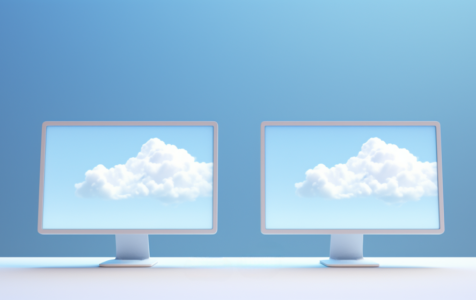Operating with a second monitor is a common practice that can occasionally run into detection issues on Windows 10. This article addresses the specific challenges faced when Windows 10 fails to recognize a second monitor and provides clear, step-by-step solutions to rectify this problem. The guide is divided into three main sections: setting up a dual monitor in Windows 10, troubleshooting common issues, including those related to drivers and graphics cards, and maintaining up-to-date drivers. By following the procedures outlined, users can quickly resolve issues related to the non-detection of the second monitor.
Setting Up a Dual Monitor on Windows
Step 1: Ensure Proper Connection
- Check all cables, including the power source, to make sure they are plugged in correctly.
- Match the source setting on the monitor to the correct port.
- If you’re using a separate graphics card, ensure the monitor is connected directly to it, not to the motherboard’s in-built graphics connector.
Step 2: Automatic Detection
- Click “Project” in the action center and select “Extend” or “Duplicate.”
- Or, go to “Settings” > “System” > “Display,” and pick “Duplicate” or “Extend.”
Step 3: Force Detection (For Older Displays)
Expert Tip: For smoother PC performance, consider using a PC optimization tool. It handles junk files, incorrect settings, and harmful apps. Make sure it's right for your system, and always check the EULA and Privacy Policy.
Special offer. About Outbyte, uninstall instructions, EULA, Privacy Policy.
- Use Windows 10’s force detect feature if the system does not recognize the display.
Step 4: Refresh Rate Adjustment
- Make sure both monitors’ refresh rates are in sync through the display settings.
Step 5: Wireless Display Connection
- For connecting a wireless display, follow the specific instructions found in Settings.
Troubleshooting Specific Issues
Issue 1: Basic Troubleshooting
- Restart the computer or check physical connections.
- Rebooting may resolve detection issues.
Issue 2: Manual Detection Through Settings
- Use the “Detect” option if Windows fails to recognize the second monitor automatically.
Issue 3: Driver-Related Solutions
- Update, reinstall, rollback, or downgrade the graphics driver as needed.
Issue 4: Frequency Adjustment
- Match the refresh rate (hertz) of both devices to prevent syncing issues.
Issue 5: OEM Computers
- Use the graphics driver from the device manufacturer to prevent compatibility issues.
Issue 6: Advanced Options and Special Cases
- Try different connections or remove in-between devices.
- Specific instructions are available for devices like Surface or if using a USB adapter.
Issue 7: Updates and Windows Version Compatibility
- Ensure your Windows is up-to-date.
- Note that accessing display settings may vary slightly between Windows 10 and Windows 11. Follow the guide that corresponds to your version.
By following these steps and suggestions, setting up a dual monitor on Windows becomes a more accessible and streamlined process. Readers can efficiently troubleshoot issues and ensure optimal setup with this guide.
Conclusion
Setting up an external display is generally straightforward, but issues can arise. By following these practical ways to troubleshoot, you should be able to fix problems that may block the system from detecting the second monitor automatically.
Whether your goal is to enhance a gaming experience or boost productivity in a professional environment, these steps are designed to ensure that all your monitors are recognized by Windows.
Note: Always refer to specific instructions provided for your graphics cards and operating systems, and if problems persist, consider seeking professional technical assistance.
